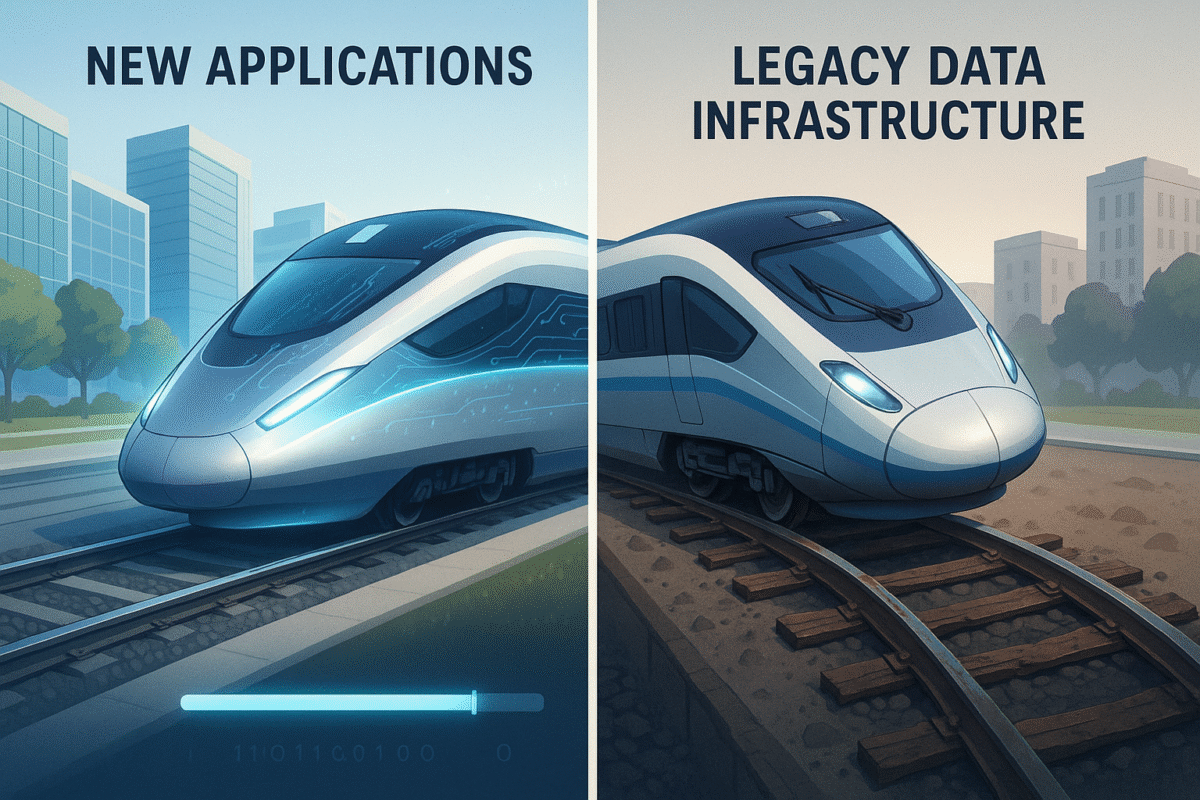Knowledge Is a Garden: Why Modernizing Record Keeping Cultivates Your Next Harvest

“Knowledge is a garden; if it is not cultivated, you won’t have any harvest.”
This African proverb beautifully captures why recordkeeping should be a living, breathing practice in every organization. Picture your historical records as the seeds, your data infrastructure as the fertile soil, and the insights, innovation, and growth you reap as the abundant harvest. In my experience working with century‑old companies, neglecting this “data soil” not only stunts growth but lets processes wither, opportunities slip away, and operational and technical debt pile up.
Four Pillars and Your Data “Garden Bed”
Most mature organizations rest on four core pillars:
- Technology & Client Services
- Digital & Client Experience
- Operational Excellence
- Shared Services
Recordkeeping is the soil that binds these pillars into a thriving ecosystem. Without well‑tended data, dashboards go dark, client portals lose personalization, and strategic decisions lack grounding. But when you integrate clean, reliable records, every initiative—from product launches to service improvements—can truly flourish.
Understanding Legacy Debt: Tackling “Yesterday’s Problems”
Legacy issues—outdated contracts, manual ledgers, siloed systems—are the weeds choking your garden’s potential. Consider the Amtrak analogy: imagine investing in gleaming new trains (your latest applications) only to discover the aging tracks (your data pipelines) force them to crawl at a snail’s pace. No matter how advanced the trains, they can’t deliver value unless the tracks can handle them. Signs that your garden needs pruning include duplicate records, missing historical context, and fractured reporting.

A Simple Triage Framework: Yesterday vs. Tomorrow
To successfully tend your data garden, you need a strategy that addresses both the problems of yesterday and the opportunities of tomorrow. Enter what we can call the “2×2 Cultivation Matrix”:

How to use the framework:
- Inventory: List your top five legacy pain points and the five most aspirational use cases for new capabilities.
- Score: Rate each item for business impact and the effort required to address it.
- Prioritize: Focus first on “Urgent Weeding” and “Seed Planting” activities that will deliver immediate value and create fertile ground for future growth.
Cultivating with Modern Tools
Modern technology can act as your indispensable gardening toolkit:
- Automation & Workflow Orchestration: Deploy robotic process automation to ingest and standardize old ledgers, ensuring your data is always ready to nurture new initiatives.
- Data Analytics & Visualization: Empower stakeholders with self-service dashboards that let them “watch the garden grow” in real time.
- AI & Machine Learning: Utilize natural language processing (NLP) to extract metadata from scanned contracts and predictive analytics to forecast demand and identify compliance gaps.
- Living Ecosystem: Embrace continuous integration of new data sources—be it IoT, CRM systems, or external benchmarks—and schedule regular “data audits” as your seasonal pruning to keep the garden vibrant and thriving.
Real World Snapshot
Let me share a practical example from my journey. When we automated a 20-year-old monthly and quarterly financial reporting process, our report turnaround plummeted from five days to just five minutes. This operational win, effectively retiring legacy debt, paved the way for integrated planning processes in IT investments, aligning financial strategies closely with our organizational priorities. Not only did we solve a historical problem, but we also unlocked new insights that fueled business growth, as we now had a much better understanding of the environment in which our organization operated and could provide the information needed to not only align strategy with project level execution but to also keep them aligned over time.
Leadership Takeaways & Call to Action
Remember, tending your knowledge garden is a daily task. Don’t let the weeds of legacy debt choke your future harvest. Here are three quick wins you can start tomorrow:
- Run a “data health check” on your top three legacy systems.
- Pilot one AI-powered record enhancement initiative, such as auto-tagging key documents.
- Host a cross-functional “garden tour” to align teams on data priorities and showcase areas for immediate improvement.
What’s the first seed you’ll plant in your organization’s knowledge garden today?
By embracing the art and science of recordkeeping, you ensure that every bit of historical wisdom is not only preserved but also leveraged as the basis for tomorrow’s innovations. As we cultivate this garden together, each decision and improvement becomes the nourishment that drives sustainable and transformative growth.

